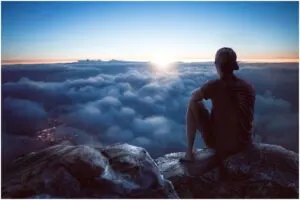Monks and yogis often spend some time meditating, as Buddhists have done since the very beginning, in graveyards, charnel grounds, or places where the bodies of the dead are compassionately offered to feed birds and beasts.
This is a very important Buddhist training to be prepared for the time of death and for insight into the nature of existence.
Gautama Buddha taught meditation in cemeteries as an exercise to contemplate deeply about impermanence and death.
Practicing meditation in cemeteries has 2 advantages.
Meditation on decay and corruption effectively drives home the truth of transience and brings vividly to mind the unsatisfactoriness of Samsara; in addition, it is said to banish carnal desire.
For Tantric adepts, there is a much greater advantage.
Seated in meditation amidst bones and rotting flesh, with the stink of corruption in their nostrils, they seek to achieve a non-dual state of mind in which no distinction is made between objects of attraction and revulsion, all things being viewed as manifestations of pure, shining Void.
The horrors depicted in Tibetan iconography – corpses, skulls, bones, blood, demonic forms, and terrible weapons, besides having an esoteric meaning that equates them with the destruction of karmic hindrances, are intended to stress non-duality.
The frightful Yamantaka, with his bull’s head and necklace of skulls, who dances upon corpses drained of blood, is no other than Manjusri, the tranquil embodiment of wisdom.
In itself, the gleaming headsman’s ax is as much an object of beauty and should be as undisturbing as the lotus in full flower.
Source – John Blofeld
- About the Author
- Latest Posts
As a founder and chief author at InsightState.com, Bulgarea Candin helps readers on their spiritual journeys. His writings are designed to inspire creativity and personal growth, guiding readers on their journey to a more fulfilled and enlightened life.

